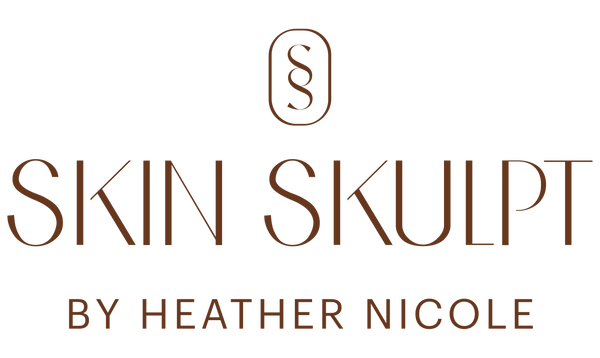As you explore the world of skincare, you may find yourself wondering about the effectiveness of skin tightening devices. With advancements in technology, these devices have gained popularity for their promises of youthful-looking skin without the need for invasive procedures. Many users report positive results, indicating that these devices can indeed produce noticeable improvements in skin firmness and texture.
It's essential to understand how these devices work and what to expect. Options like radiofrequency and LED devices are designed to stimulate collagen production and promote skin rejuvenation. While results can vary from person to person, many find that regular use can lead to a more youthful appearance.
If you're considering a skin tightening device, it's important to weigh the potential benefits against your individual skin concerns and goals. This article will delve into the science behind these technologies and help you determine if they are the right fit for your skincare routine.
Understanding Skin Tightening Devices
Skin tightening devices have become increasingly popular for those seeking non-surgical alternatives to improve skin elasticity and firmness. These devices utilize various technologies to stimulate collagen and elastin production, targeting skin laxity and promoting a youthful appearance.
Types of Skin Tightening Devices
There are several types of skin tightening devices available, each utilizing different technologies:
-
Radiofrequency Devices: These devices deliver energy deep into the skin to heat tissue, which stimulates collagen production. They can treat various body areas effectively. You can find a detailed overview of this technique in the article on WebMD.
-
Microcurrent Technology: These devices use low-level electrical currents to stimulate the muscles and promote collagen and elastin production. Many users report a firmer appearance after treatments.
-
LED Devices: These utilize specific light wavelengths to penetrate the skin, boosting collagen and elastin synthesis. They are often used for both tightening and rejuvenating skin.
-
Ultrasound: Devices like Ultherapy utilize ultrasound energy, reaching deep layers of skin to tighten and lift, which can be particularly effective for sagging skin.
How Skin Tightening Devices Work
Skin tightening devices operate through various mechanisms that enhance your skin's structure.
-
Collagen and Elastin Production: Most devices aim to boost the natural production of collagen and elastin, proteins crucial for skin elasticity and firmness.
-
Heating Mechanisms: Technologies like radiofrequency work by heating the dermis, causing immediate contraction of collagen fibers followed by long-term collagen remodeling.
-
Cellular Stimulation: Microcurrent and LED devices stimulate cells to energize and promote healing processes, leading to firmer and smoother skin.
Regardless of the type you consider, understanding how each device works helps you make informed choices about your skincare routine, particularly for preventive and rejuvenating care.
Scientific Basis of Skin Tightening
Understanding the science behind skin tightening devices is essential for assessing their effectiveness. Key processes include collagen production, which is vital for skin elasticity, and the role of specific treatment devices like RF (radiofrequency) and LED technologies.
Collagen Production and Skin Elasticity
Collagen is a crucial protein that maintains skin structure and firmness. As you age, your body produces less collagen, leading to sagging and loss of elasticity. Skin tightening devices aim to stimulate collagen production through controlled thermal injury to deeper skin layers.
Techniques such as RF treatment generate heat, promoting collagen remodeling. This process can enhance skin texture and may lead to a more youthful appearance. Regular use of these devices can lead to improved skin elasticity over time, particularly when combined with skincare products formulated with organic ingredients.
Efficacy of RF Treatment and LED Devices
RF treatment works by delivering energy to the skin, resulting in warming that encourages collagen synthesis. Research indicates that RF devices can lead to noticeable improvements in skin tightness. According to findings, these treatments can be effective for various skin types, targeting areas like the face, neck, and abdomen.
LED devices typically utilize specific wavelengths of light to stimulate skin healing. These can enhance the effects of RF treatments, providing further anti-aging benefits. Users of these combined approaches often report significant improvements in skin appearance, especially when following consistent regimens. With advancements in technology, many accessible options are available, allowing you to incorporate these treatments into your skincare routine effectively.
Benefits and Limitations
Skin tightening devices can offer visible improvements in skin texture and firmness. However, it’s important to weigh these benefits against potential side effects and individual considerations.
Visible Reduction of Fine Lines and Wrinkles
You may notice a reduction in fine lines and wrinkles after using skin tightening devices. Many treatments, such as radiofrequency therapy, target signs of aging effectively. They work by stimulating collagen production, leading to firmer skin and a smoother appearance.
The visible results can be especially beneficial for those in their 30s focusing on preventative care as well as older individuals, typically in their 50s to 60s, seeking rejuvenation. Regular usage may help maintain these improvements over time. Keep in mind that results can vary based on skin type, age, and the specific device used.
Considerations and Side Effects
While benefits exist, there are considerations to keep in mind. Some users may experience mild side effects such as skin sensitivity, redness, and swelling during or after treatment. Tingling sensations can also occur, indicating how your skin is responding.
These side effects are generally temporary but can affect your experience. It’s advisable to consult with a skincare professional to select a device suitable for your skin type and to discuss any concerns. Understanding these limitations helps in making informed decisions for your skincare regimen.
Practical Advice for Skin Tightening Device Users
Using skin tightening devices can be effective when employed correctly. Developing a personalized treatment plan and maintaining proper skincare routines are vital for optimal results.
Creating a Treatment Plan
Begin by consulting a dermatologist or a skincare professional to determine the right device for your skin type and concerns. Consider factors like your age and specific skin issues.
Establish a treatment schedule that fits your lifestyle. For instance, using a radiofrequency device two to three times a week often yields good results.
Key steps for a successful treatment plan:
- Assess Your Skin: Evaluate your skin's needs and consult professionals.
- Device Selection: Choose a device that aligns with your goals.
- Consistency is Crucial: Stick to your set schedule for maximum benefits.
Incorporate complementary organic skincare products to further enhance your results. Skin Sculpt, for example, offers affordable options that work well with in-office treatments.
Long-Term Maintenance and Care
Maintain your skin's health by following a consistent skincare routine. This should include cleansing, moisturizing, and using sunscreen daily to protect against sun damage.
Regular follow-ups with your dermatologist can help adjust your treatment plan as your skin evolves. This is especially important for older customers looking to address rejuvenation.
Tips for long-term care:
- Daily Skincare Routine: Implement a regimen to support skin health.
- Sunscreen Application: Protect your skin from harmful UV rays.
- Hydration: Keep your skin hydrated with organic moisturizers.
Incorporating these practices ensures that you effectively maintain the benefits achieved through your skin tightening device. Balancing treatments and skincare promotes a youthful appearance while addressing specific concerns.
Professional Insight from Dermatologists
Understanding the effectiveness of skin tightening devices requires insights from dermatologists. They evaluate both at-home options and clinical procedures to best address various skin conditions, ensuring a tailored approach for differing needs.
Comparing At-Home Devices to Clinical Procedures
Dermatologists often emphasize that at-home skin tightening devices can complement professional treatments but usually lack the same potency. Clinical procedures, such as radiofrequency and ultrasound therapies, are designed to penetrate deeper layers of skin, offering significant and more immediate results.
At-home devices typically provide milder, gradual improvements. For instance, home-based RF devices can be effective for minor tightening and skin texture improvement. Still, they may not address more severe skin laxity or conditions like rosacea.
In addition, clinical procedures are performed by licensed professionals, ensuring proper technique and safety, which can significantly reduce the risk of side effects. The investment in professional treatment is often justified by the faster and more noticeable outcomes.
Managing Skin Conditions with Skin Tightening
When it comes to managing skin conditions, dermatologists often consider individual patient needs. Conditions like rosacea require careful handling. Certain skin tightening treatments may aggravate rosacea flare-ups due to increased heat and inflammation.
In contrast, more specialized treatments can enhance skin health. For example, non-invasive procedures can improve skin laxity while being mindful of sensitive skin types. Dermatologists may recommend a combination of in-office treatments and at-home devices. This dual approach can optimize results while minimizing risks.
Using gentle skin care products alongside these treatments is critical. A focus on organic ingredients, as seen in offerings from brands like Skin Sculpt, aligns well with this strategy. Such products can support skin recovery, especially in sensitive areas.
Frequently Asked Questions
You may have several questions about the effectiveness and safety of skin tightening devices. Here are some common inquiries regarding radio frequency treatments, their risks, and their outcomes.
What are the potential risks associated with radio frequency skin tightening?
Potential risks of radio frequency skin tightening include skin irritation, redness, and swelling after the procedure. In some cases, patients may experience burns or changes in skin pigmentation. It's essential to consult with a qualified professional to minimize these risks and ensure safe treatment.
Can radio frequency treatments for skin tightening lead to cancer?
Currently, there is no evidence to suggest that radio frequency treatments for skin tightening can lead to cancer. These devices are designed to target specific layers of skin without affecting deeper tissues. However, always discuss any concerns with your healthcare provider before proceeding.
What are the before and after effects of using skin tightening devices on the face?
Before treatment, you may notice sagging skin or loss of elasticity. After using skin tightening devices, many individuals report firmer and more youthful-looking skin. Results can vary, but improvements typically become noticeable within a few sessions.
What is considered the most effective method for tightening skin?
Radio frequency treatments are often regarded as an effective method for tightening skin, especially for facial rejuvenation. Other options include laser therapy and ultrasound treatments, each offering different benefits based on individual skin needs and conditions.
Which at-home radiofrequency device is recommended for the best results?
Among at-home radiofrequency devices, those that are FDA-cleared and have positive user reviews are generally recommended. Look for devices that offer adjustable settings and are backed by clinical studies for safety and efficacy to achieve the best results.
How do results from radio frequency stomach tightening compare before and after treatment?
Before radio frequency stomach tightening, you may experience loose or sagging skin in the abdominal area. After treatment, many report a tighter, more toned appearance. Improvements can vary, but consistent sessions can enhance and maintain results effectively.


